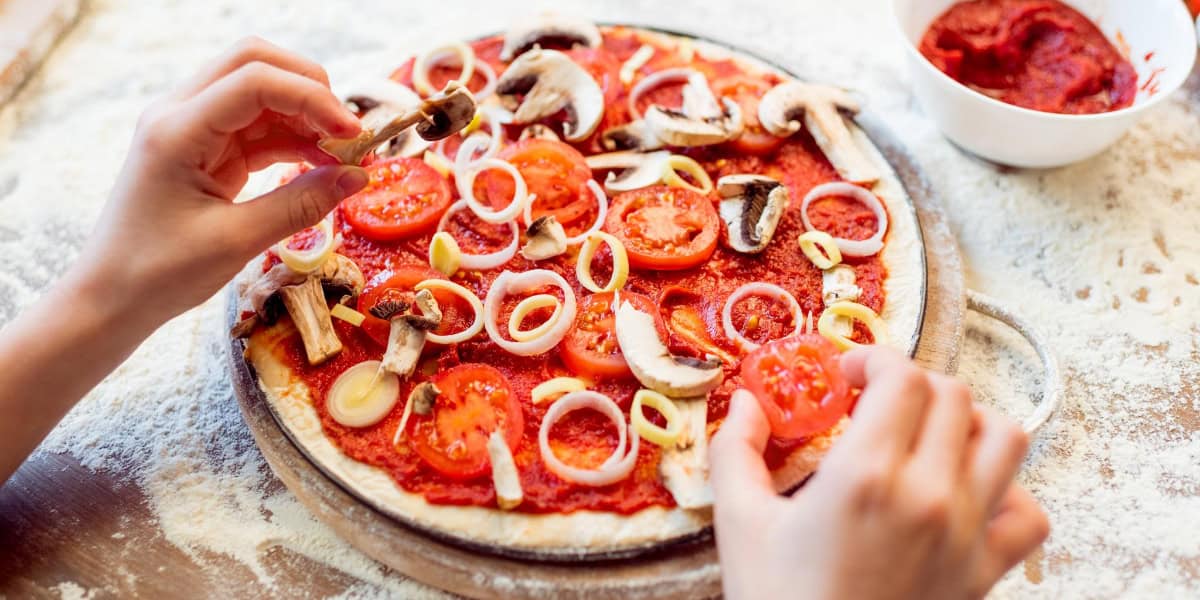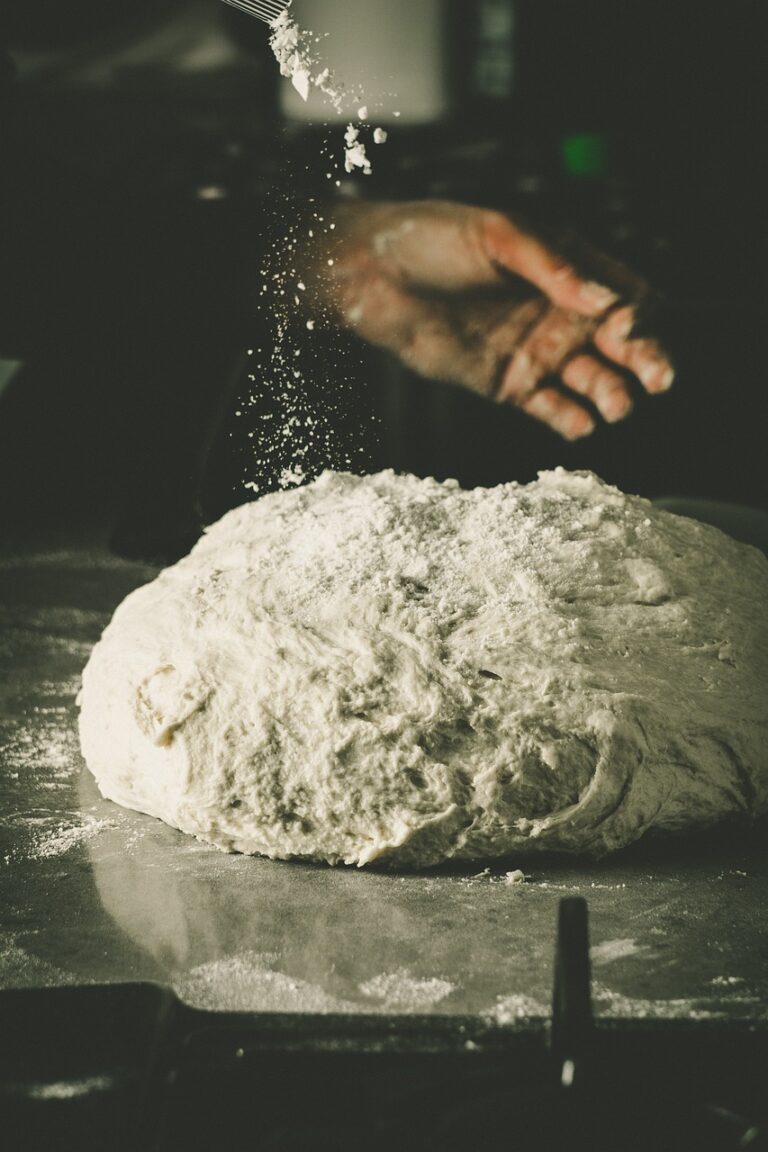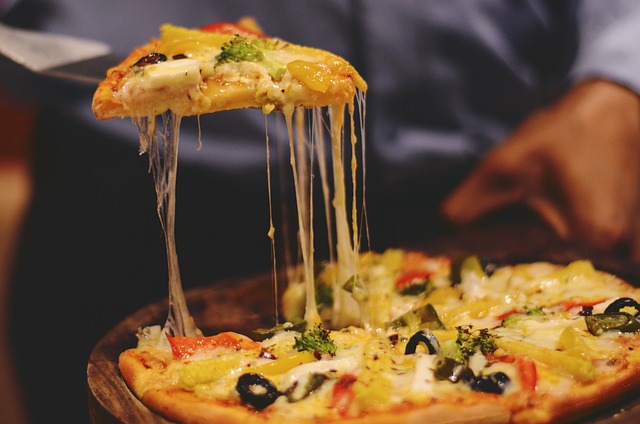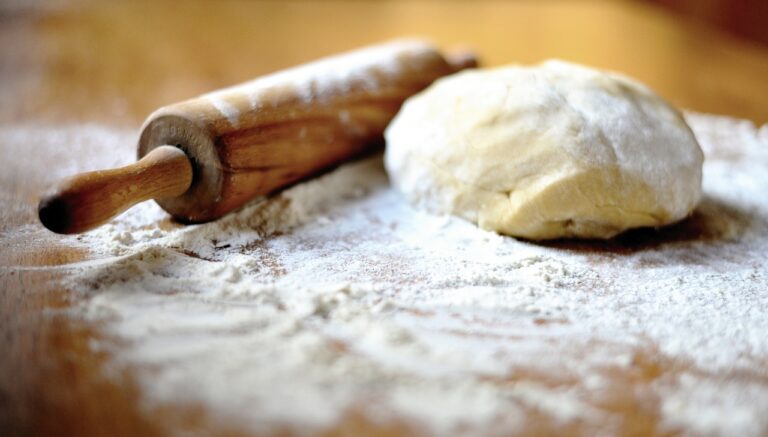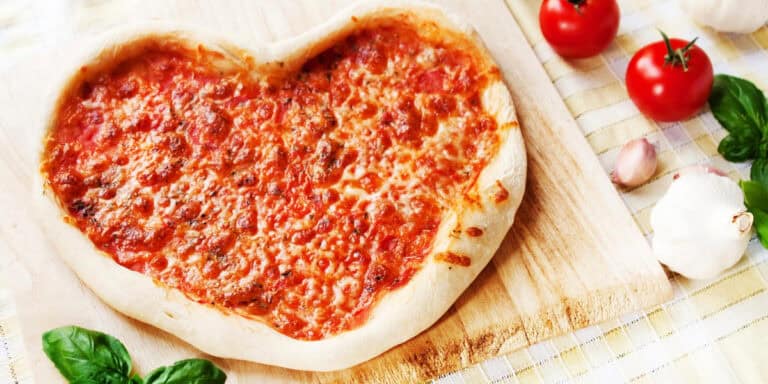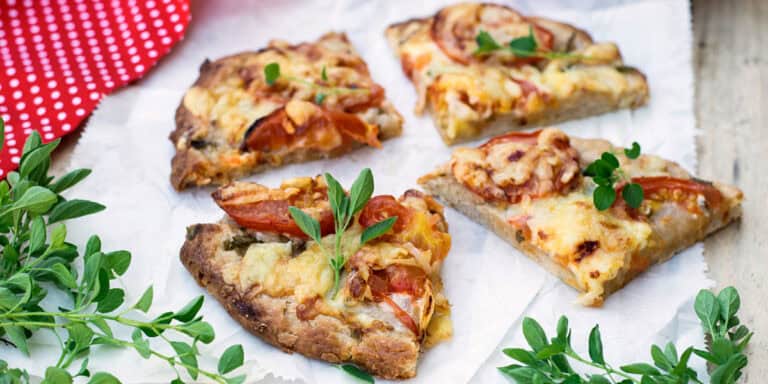Quick and Easy Pizza Crust Recipe
Are you craving a homemade pizza with a crust that’s both quick and easy to make? Look no further!
This article will guide you through creating a delicious pizza crust in just a few simple steps. You’ll learn the best ingredients, time-saving techniques, and flavour enhancements to take your pizza to the next level. Say goodbye to store-bought crusts and hello to a fresh, innovative dining experience right in your kitchen. Let’s get started!
Ingredients for Quick and Easy Pizza Crust Recipe
This quick and easy pizza crust recipe requires just a few simple ingredients. Whether you want to experiment with different types of flour or opt for gluten-free options, this recipe has you covered.
To start, gather 2 cups of all-purpose flour or use whole wheat flour for a healthier twist. If you’re seeking a gluten-free option, almond or rice flour works perfectly. Next, add one teaspoon of instant yeast and one teaspoon of sugar to help activate the yeast. Don’t forget a pinch of salt to enhance the flavour.
Adding one tablespoon of olive oil will do wonders for those who prefer a lighter crust. Now, it’s time to combine everything by slowly incorporating ¾ cups of warm water into the mixture. Knead the dough until it becomes smooth and elastic, which should take about 5 minutes.
Once your dough has reached the desired consistency, cover it with a clean kitchen towel and let it rest in a warm place for at least an hour. This will allow the yeast to work magic and make your crust light and fluffy.
With these simple ingredients, you can create a variety of delicious pizza crusts that cater to different dietary preferences. Get creative with your toppings and enjoy your homemade pizza!
Step-by-step Instructions for Making Pizza Dough
First, gather all the necessary ingredients for making the dough. You’ll need 2 cups of all-purpose flour, one teaspoon of salt, one tablespoon of sugar, one packet (or about two and a quarter teaspoon) of instant yeast, 3/4 cup of warm water, and two tablespoons of olive oil.
To make your delicious pizza crust, combine the flour, salt, sugar, and instant yeast in a large mixing bowl. Mix them well to ensure even distribution. Then, add the warm water and olive oil to the dry ingredients. Use a wooden spoon or your hands to mix everything until it forms a sticky dough.
Next comes the fun part – kneading! Sprinkle some flour onto a clean surface and transfer the dough onto it. Knead for about 5-7 minutes until you get a smooth and elastic texture. This process helps develop the gluten in the dough for that perfect chewiness.
Now that your dough is ready, cover it with plastic wrap or a clean towel and let it rise for about an hour in a warm place. This will allow it to double in size. After rising time is up, punch down the dough to release any air bubbles that may have formed. You can now shape it into your desired pizza crust thickness.
Voila! Your homemade pizza crust is ready for flavorful toppings! Get creative with your favourite sauces like marinara or pesto, piles of cheese, fresh veggies, or meats – let your imagination run wild!
For gluten-free alternatives, replace all-purpose flour with a gluten-free flour blend in this recipe. The result will still be just as delicious!
So there you have it – an easy-to-follow recipe for making mouthwatering pizza crust at home. Enjoy experimenting with different flavours and toppings while impressing everyone around you with your culinary skills!
Tips for Perfectly Fluffy and Crispy Pizza Crust
Are you wondering whether to use yeast in your pizza crust? The choice between yeast and no yeast can significantly affect the texture and flavour of your crust.
We will explore the pros and cons of both options so that you can make an informed decision for your perfect pizza. Additionally, we will delve into the importance of baking temperature and time, as these factors play a crucial role in achieving that ideal balance of fluffy and crispy on the outside.
Yeast Vs. No Yeast
There’s a debate among pizza enthusiasts about whether to use yeast in the crust or not. Some argue that using yeast is essential for achieving that light and airy texture we all love in a perfect pizza crust. Yeast provides fermentation, which creates carbon dioxide bubbles and gives the dough its rise. This results in a soft and chewy crust with just the right amount of crispiness on the outside.
However, if you prefer a quick and easy option, there are alternatives to using yeast. One popular alternative is baking powder, which acts as a leavening agent without requiring any fermentation time. Baking powder helps the dough rise quickly by releasing carbon dioxide when it comes into contact with liquid ingredients.
While yeast alternatives can be convenient, using yeast in your pizza crust has several benefits. Firstly, yeast adds flavour complexity to the dough as it ferments and releases aromatic compounds. The slow fermentation process also allows flavours to develop over time, creating a more complex and delicious crust.
Ultimately, whether you choose to use yeast or not depends on your preference for taste and convenience. Both options can yield delicious results; it’s all about finding what works best for you!
Baking Temperature and Time
Preheat your oven to the recommended temperature for a perfectly golden and crispy crust. Baking pizza dough at the right temperature is crucial for getting that deliciously crisp texture.
Here are some baking techniques to help you create the perfect crust:
- Use a pizza stone or baking steel: These tools absorb and distribute heat evenly, producing a crisp crust.
- Pre-bake the crust: Par-baking the crust before adding toppings helps prevent sogginess.
- Experiment with alternative crust options: Try using cauliflower or zucchini as a base for a healthier alternative.
Time-saving Techniques for Preparing Pizza Dough
If you want to save time while preparing pizza dough, try using a stand mixer instead of kneading by hand. This time-saving technique is a game-changer for busy individuals who still want to enjoy the deliciousness of homemade pizza.
Kneading by hand can be laborious and take up valuable time, but with a stand mixer, you can reduce the effort and speed up the process.
A stand mixer does all the hard work for you, effortlessly combining the ingredients and kneading the dough to perfection. Add your ingredients to the mixing bowl, attach the dough hook, and let it do its magic. The powerful motor ensures thorough mixing and kneading in just a fraction of the time it would take if done by hand.
Not only does using a stand mixer save you precious minutes in preparation, but it also guarantees consistent results every time. The machine’s steady speed and controlled motion ensure your dough is evenly mixed and adequately developed. This means no more unevenly risen crusts or dense spots in your pizza.
So why waste time kneading by hand when you can achieve excellent results with minimal effort? Incorporate this innovative approach into your pizza-making routine and enjoy more free time without compromising taste or quality.
Variations and Flavor Enhancements for Pizza Crust
Are you tired of the same old plain pizza crust? This discussion will explore the world of creative pizza crusts and how they can take your homemade pizzas to a new level. From stuffed crusts to gluten-free options, get ready to discover exciting ways to jazz up your pizza game.
Additionally, we will delve into enhancing flavours with toppings, exploring unique combinations that will tantalize your taste buds and leave you craving more. Get ready for a culinary adventure that will revolutionize how you think about pizza!
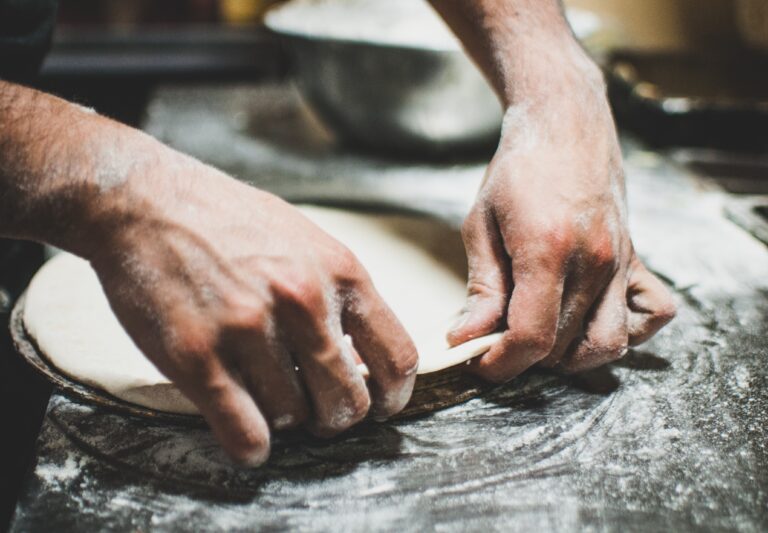
Creative Pizza Crusts
There’s nothing like trying different toppings on your pizza crust to get creative with your homemade pizzas. If you’re looking to take your pizza game to the next level, here are some innovative ideas for customized pizza toppings and gluten-free crust options:
- Loaded Veggie Delight: Top your crust with colourful veggies like bell peppers, mushrooms, onions, and zucchini. Sprinkle with feta or mozzarella cheese for extra flavour.
- BBQ Chicken Fiesta: Slather your crust with tangy BBQ sauce, then pile on grilled chicken chunks, red onions, cilantro, and a blend of cheddar and Monterey Jack cheese.
- Mediterranean Medley: Create a Mediterranean-inspired masterpiece by layering hummus as the base, followed by artichoke hearts, cherry tomatoes, Kalamata olives, spinach leaves, and crumbled feta cheese.
- Thai Curry Fusion: Spice things up by spreading Thai curry paste on the crust and topping it with cooked shrimp or tofu cubes. Sliced red peppers and fresh cilantro add an explosion of flavors.
- Classic Margherita Twist: Add thinly sliced prosciutto or crispy bacon bits and fresh basil leaves to transform the traditional Margherita pizza.
These creative combinations will tantalize your taste buds and showcase your culinary prowess. Don’t be afraid to experiment with different toppings—there are endless possibilities! And remember to explore gluten-free crust options if you have dietary restrictions. Happy pizza making!
Enhancing Flavors With Toppings
To enhance the flavours of your pizza, experiment with a variety of toppings that complement each other beautifully. Adding flavorful toppings and unique seasonings to your homemade pizza can take it from ordinary to extraordinary. Think outside the box and try combinations that surprise and delight your taste buds.
Here are some ideas to get you started:
| Toppings | Seasonings |
|---|---|
| Fresh basil | Red pepper flakes |
| Caramelized onions | Garlic powder |
| Prosciutto | Truffle oil |
The possibilities are endless! Mix and match these toppings and seasonings to create a pizza that is uniquely yours. Don’t be afraid to get creative and experiment with different flavour combinations. Whether you prefer a classic margarita or a bold BBQ chicken, adding flavorful toppings and unique seasonings will elevate your pizza game. So go ahead, have fun in the kitchen, and let your taste buds guide you on this delicious journey of culinary innovation.
Common Mistakes to Avoid When Making Pizza Dough
One of the most common mistakes when making pizza dough is not kneading it enough. Kneading is a crucial step in the process as it helps develop gluten, which gives the dough its elasticity and structure. Without proper kneading, your pizza crust may become dense and tough instead of light and airy.
To prevent this mistake, here are some troubleshooting tips for perfect pizza dough:
- Ensure proper hydration: Adding too much or too little water can affect the texture of your dough. It should be slightly sticky but still manageable.
- Allow adequate proofing time: Rushing the proofing process can result in a lack of flavour and poor texture. Give your dough enough time to rise correctly for optimal results.
- Don’t forget to rest the dough: After kneading, let the dough rest for at least 24 hours in the refrigerator. This allows the flavours to develop and makes them easier to work with.
